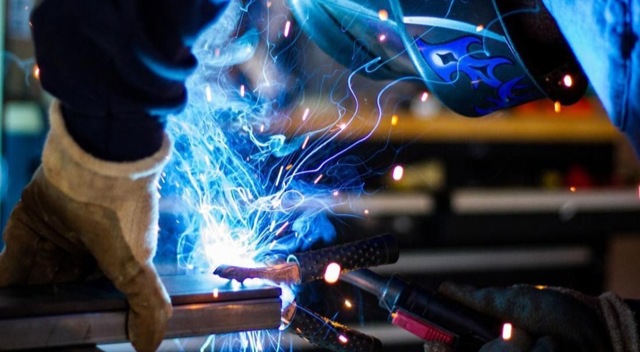
Bay Area Manufacturing Demand Sparking Additional Need For Industrial
While the demand for more last-mile distribution from the likes of Amazon and Walmart are fueling unprecedented low vacancy rates in the Bay Area’s industrial sector, a long-existing industry is expanding throughout the region.
“With so much emphasis on last-mile distribution, the first mile has somewhat been forgotten in the Bay Area, but it’s a significant factor that shouldn’t be overlooked,” JLL Managing Director Greg Matter said.
Manufacturing has declined by two-thirds since 2000, when the industry peaked, but has since rebounded in all nine Bay Area counties, according to an SFMade report. About 7,500 manufacturing companies are based in the Bay Area and the industry employs 340,000 workers, or 10% of the Bay Area’s workforce.
Production is moving closer to engineering and design as well as closer to the consumer, which is increasing demand for manufacturing in the Bay Area, according to Matter.
These manufacturing jobs also generate salaries of about $150K and add to the local economy, according to data from the Bay Area Urban Manufacturing Initiative and JLL. For every $1 spent in manufacturing, $1.81 is added to the economy. Every manufacturing job supports four jobs in other sectors.
A local initiative, BAUM, was created in 2016 by SFMade as part of a three-year project to create a regional manufacturing ecosystem. Founding cities includ e San Francisco, Oakland, Fremont and San Jose, and a total of 26 Bay Area cities are part of this initiative.
The initiative is educating member communities about manufacturing from land-use policy to job training to provide ways to better support manufacturing in the Bay Area, Matter said.
Despite these efforts, many challenges remain. Labor shortages, which have been an ongoing issue in construction, also have been problematic in manufacturing, which needs more skilled labor even with advancements in automation and technology.
Logistics problems also plague the industry and cities have been moving to lessen truck traffic, which can disrupt or delay the delivery of raw materials and distribution of finished goods.
A lack of modern industrial facilities also remains problematic and most Bay Area cities have record low vacancy levels. Many of the newer buildings are being leased up as quickly as they are being built.
A Vibrant Manufacturing Industry
The growing industry has proven to be diverse, and cities are working toward providing space both big and small. Many of San Francisco’s entrepreneurial manufacturers create apparel, sewn product, food and beverage and lifestyle products that are often small operations.
Developers such as Kilroy Realty have been moving toward providing additional production, distribution and repair space across their products to provide light manufacturing space for smaller makers and startups. Kilroy’s 100 Hooper will provide 83K SF of PDR, and its Flower Mart project will add 125K SF of PDR through the creation of a new wholesale flower market. Trammell Crow Residential plans to includ e over 8K SF of PDR in a new mixed-use housing development planned near Mid-Market.
San Jose’s manufacturing industry is the most established and produces business-to-business products and contract manufacturing. Many of these companies also manufacture in Fremont, San Francisco or Oakland.
While Fremont is known as the home of Tesla’s factory, the city is chock full of electronics contract manufacturing, and facilities often act as secondary locations for large domestic and international companies. Oakland offers the most varied manufacturing sector, with companies ranging from electronics and metal fabrication to food and beverage.
Bay Area companies are leaders in developing and adapting Industry 4.0, the current manufacturing trend toward automation and data exchange, according to Matter. He said this trend will mean more advanced manufacturing will come to the region.
“From 3D-printed custom footwear and medical devices to autonomous vehicles, the future of manufacturing in the Bay Area is strong,” Matter said.
20171201

